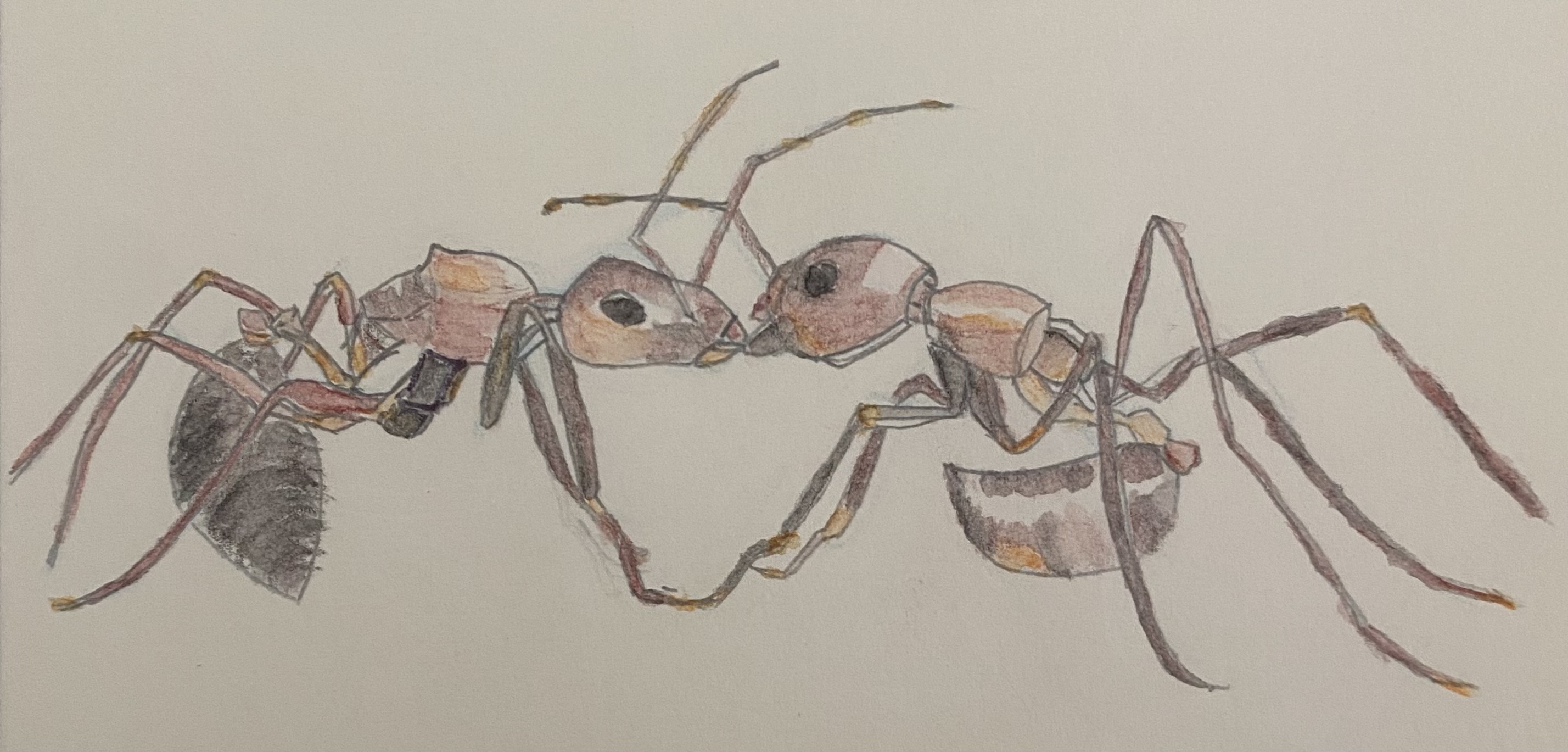The small but mighty ant, 10 thousand trillion strong, capable of carrying 10 to 50 times their body weight, are also hardened soldiers. When colonies compete for resources or raid each other's nests, wars are waged. Let's zoom into the world of ant warfare which knows no respite.

Unlike human warfare, ants cannot make inspirational speeches before battle, or coordinate colony wide strategies. Instead, they communicate one-on-one, exchanging chemicals which are sensed with their antenna. A battle will begin when two ants from different colonies meet. Depending on how close the encounter is to home, if the ants are from different species, and comparative size, the ants will respond more or less aggressively. From this moment, recruitment of troops begins by releasing chemicals and priming their nestmates with touch. However, scientists have observed larger worker ants posturing to one another in a tennis match of sorts of intimidation.
If the posing didn't work, combat ensues once ants have been recruited. The most common fighting tactic is to use the mandibles to bite and crush the enemy ant. Ants target weak points like the antennae, eyes, and legs and any thinner connective parts.
Ants also attack with venom which is injected from the abdomen. The asian weaver ant takes this one step further by shooting the venom from their abdomen effectively making them the archers of the army.
What I call "suicide bombers" are found in the Colobopsis ants. They are designed to explode in combat by tensing their abdomen to the point of popping open, covering their enemies with lethal goo.
When the enemy ant is much larger, but fewer in number, ants team up to dismember the larger enemy. One ant may sacrifice itself to the enemy’s mandibles so that other ants can freely dismember its legs and pierce its abdomen.
Ants look delicate and febrile from 6 ft up, but if you only measured a couple of millimeters tall, you would stay out of their way. Their exoskeletons are made from a long chain of repeating molecules called chitin, which is just a kind of complex carbohydrate. The chitin is what makes their exoskeleton transparent, pliable but reasonably tough. Who would have guessed however that like roman legionnaires, ants carry armor. Except instead of clumsily lugging it around, they’ve evolved to embed a mineral armor within the chitin. The minerals used vary depending on the species; they mostly consist of calcium carbonate, and reinforce the exoskeleton making it tougher. In the The Acromyrmex echinatior leaf cutting ant develops a magnesium armour as they mature which covers their whole body. In their case, the magnesium doubles the exoskeleton hardness with only a 7% increase in thickness.
Moral of the story is that ants are amazing, and have evolved attacking and defensive capacities to compete in the heartless natural world.